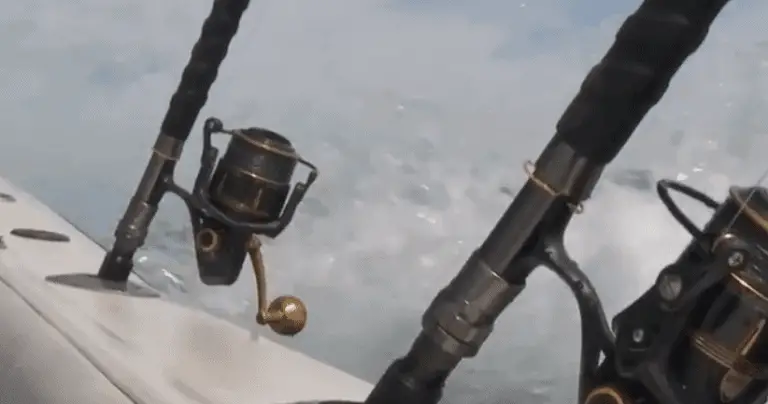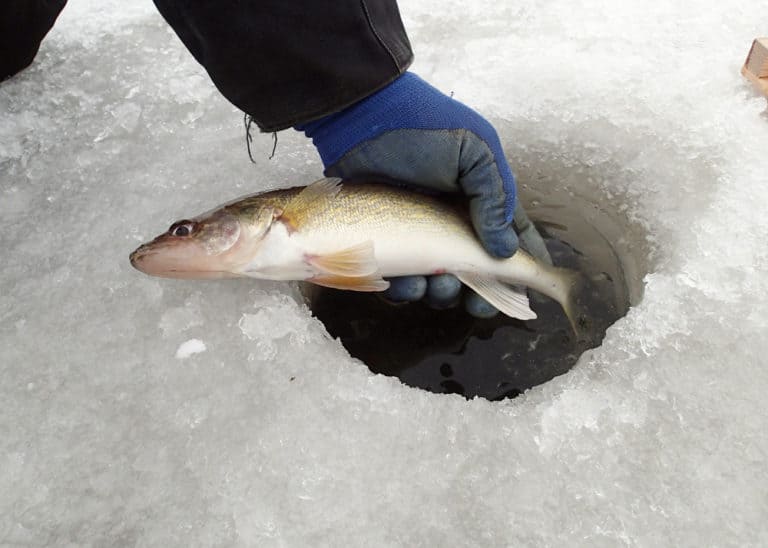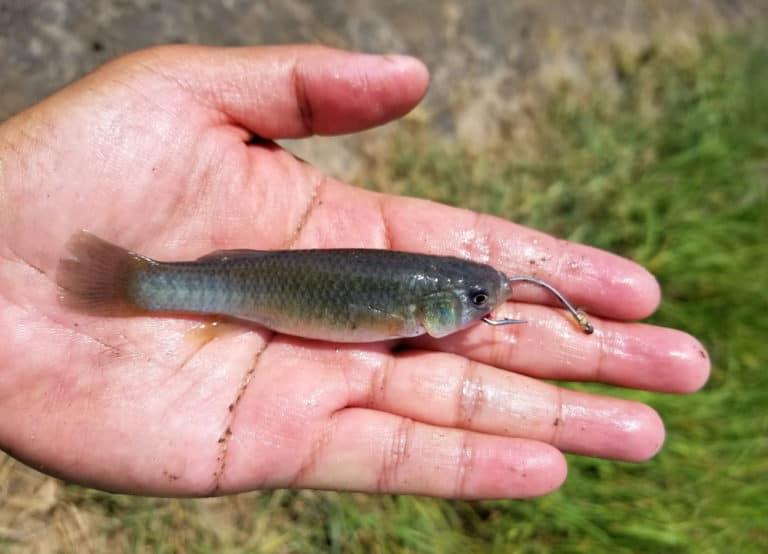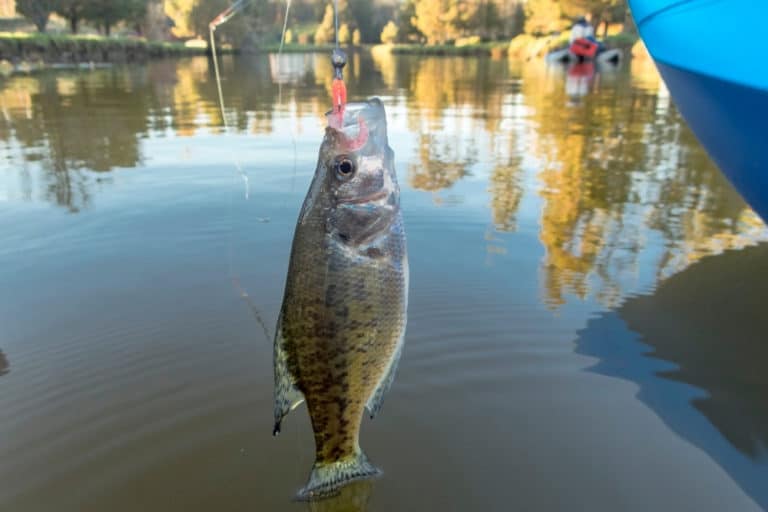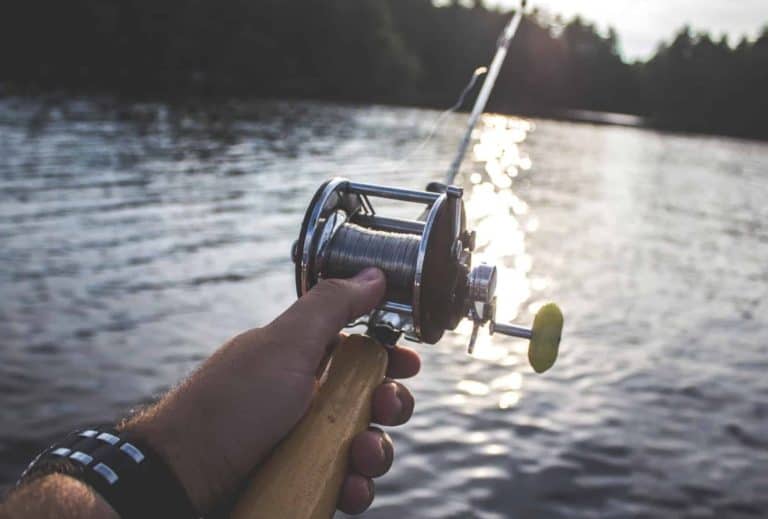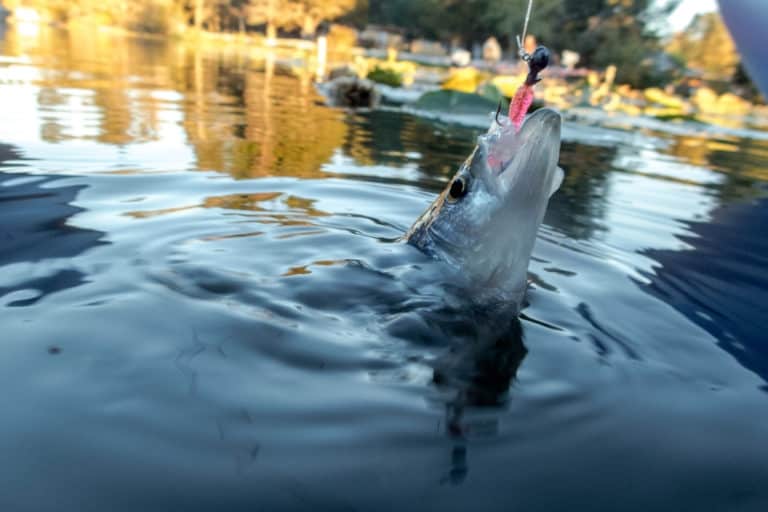Best Crappie Jigging Techniques
Crappie fish absolutely love a good jig…no, not the whimsical dance sort of jig (although maybe), I’m talking of course about fishing jigs.
For the uninitiated, a jig is essentially just a hook weighted at the head to provide more of a vertical motion in the water as opposed to the horizontal travel of spinnerbaits.
There’s just something about their jerky motion that crappie can’t resist, especially when baited with some tasty grub, tube, or swimbait.
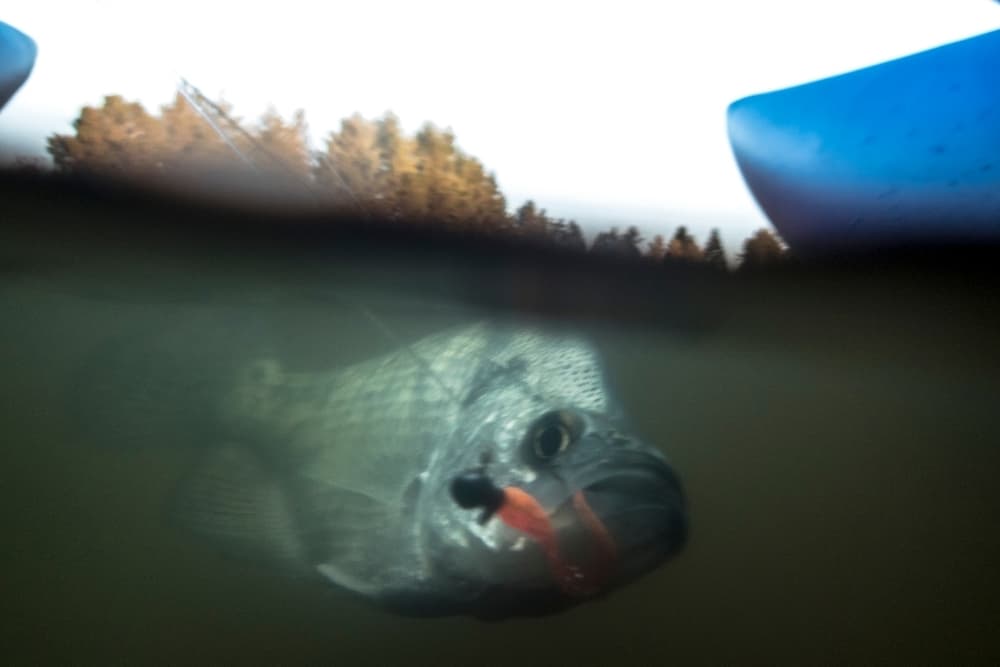
Table of Contents
How to Catch Crappie Using a Jig
That’s enough of a preamble, I feel. You’re eager to get out on the water and snag some crappie, and I’m just as eager to let you in on how it’s done, so let’s get cracking.
Today, I’m going to cover the three best crappie jigging techniques you’ll use to convince crappie to chow down on your bait whilst jigging. These techniques are known as casting and retrieving, vertical jigging, and jig trolling.
Each of these techniques creates realistic jig motion in the water, which is exactly what you need to fool a fish with such big eyes.
Jigging for Crappie – The Casting and Retrieving Technique
Casting and retrieving is the most commonly used crappie jigging method, as it doesn’t require any other bits of gear, just your rod, your line, your jig, and your bait. You can think of it as a trial and error approach to fishing.
As you’ve probably guessed from the name, it’s not all that complicated. It just involves casting out and retrieving the jig.
I know what you’re thinking…how the heck am I going to fill this cooler if I’m constantly retrieving the bait?
Well, the general idea is that you’ll use this method to hone in on crappie location.
Experimenting with different speeds during retrieval alters the depth of the jig, with fast retrievals staying shallow, and slow retrievals diving deeper.
Once you feel a few nibbles, you’ll know where they’re hanging out, and you can continue casting in that area and retrieving at the same speed.
This technique works particularly well if you can see the substrate through the water, as you can reel with enough pace to glide the jig just beyond the brush, encouraging the crappies to strike out from their hiding place and take a bite.
A stop and reel technique can help to add a bit of realism to the motion, but usually, the wind and the water do the work for you.
Jigging for Crappie – The Vertical Jigging Technique
Whereas the cast and retrieval technique is employed to find the fish, the vertical jigging technique requires prior knowledge of crappie location, so you may need a fishfinder to give it a go.
Once you know where the crappie are, position yourself directly above them using a boat or dock, and gently lower your jig towards the bed. This is an incredibly successful technique as, like most fish, crappies feed in an upward fashion. Just try not to let your jog sink below them.
Yo-yo jigging can be effective with this technique, but try not to meddle too much. The key is to keep everything looking natural.
If you know the exact depth of the school, it’s best to resist the urge to move your rod at all. Be patient, and wait for a bite.
Jigging for Crappie – The Jig Trolling Technique
Trolling is a fishing technique in which multiple lines are baited and cast from a boat. The boat then makes steady passes over the water.
This technique is best used when trying to locate fish quickly in large bodies of water, such as lakes, rivers, and reservoirs. You’ll typically have the most success when trolling over something that gives the crappie shelter, such as coves, channels, ledges, or sunken debris.
Trolling needs to be done very slowly in order to give the jig a natural movement — we’re talking 0.1 – 0.5 mph. You’ll also need to use quite a heavy jig in order to keep it at the correct depth while in motion.
When you finally feel a nibble, your search is over, and you can make passes over the same spot again and again.
Frequently Asked Questions
Before we go our separate ways, let’s tie things up with a quick FAQ session.
What’s the best way to jig for crappie?
Vertical jigging and jig trolling tend to be the most successful ways of jigging for crappie, but it depends on the situation and your resources.
If you’re fishing in a small body of water or don’t have access to a boat or fishfinder, then casting and retrieving is your best course of action.
If you have access to both these luxuries, you can use a combination of trolling and vertical jigging to increase your yield.
What’s the best jig style for Crappie fishing?
There are tons of different styles of jig out there, and you need to find one that suits your fishing style, the environment, and, of course, entices even the most hesitant biters lurking in the depths of your favorite fishing haunts.
Unfortunately, I can’t give you one clear-cut answer here. Some anglers swear by a classic Marabou jig, while others report a better yield using a Blakemore Road Runner style affair.
My personal favorites include this Eagle Claw jig for its versatility (great with a bobber or for a twitchy vertical strategy), and this Norman Lures Deep Little N for delving deep in a water column in search of the larger crappies nearing the substrate.
The trick is to experiment with a bunch of different styles and colors and have fun with it.
What’s the best jig head color for crappie fishing?
Crappies have great eyesight, and they’re very receptive to color. It’s best to use more vivid colors such as chartreuse or pink in murky waters, while a more natural green, brown, or translucent jig head is best for clear waters.
Final Thoughts
There you have it, folks. Casting and retrieving is a fantastic option if you’re fishing from a bank, and you don’t have access to equipment, but vertical jigging with a fish finder will increase your catch rate significantly.
Then there’s jig trolling that allows you to locate schools of crappies scattered across a large body of water. Now you can jig for crappies with confidence and come back with a cooler full!

